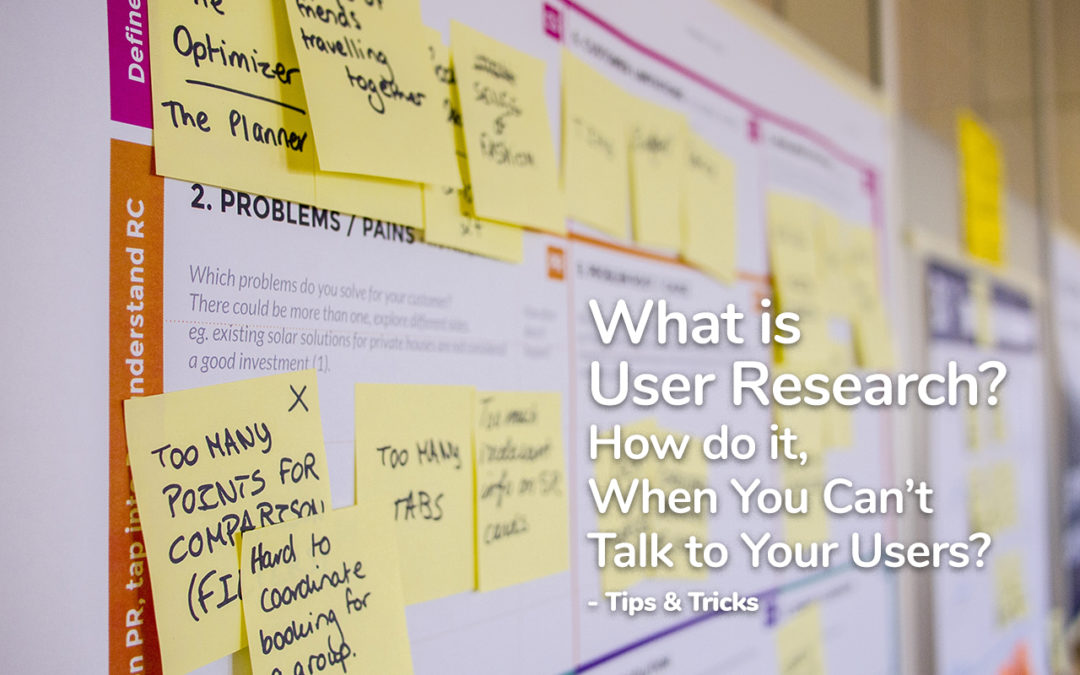Trust is the keystone of business. It must be embedded in every single interaction user undergo with your product and brand i.e. right from user onboarding best practices till the time the user experience ends.
Creating a reliable product involves deep insight and super design. Not only should you interpret what users desire from your product but also give them value for your product instantly.
A major part of creating flawless experiences is combining many interactions and touchpoints of a brand with their users which in turn will instill trust. As a matter of fact, trust is the latest and robust currency in our developing economy and it is the bedrock in setting up a flourishing product. A trustworthy brand will make people confident while revealing their payment details with you.
They’ll be convinced that your products are standardized and will believe that if any issue comes up, your company can be trusted to sort things out. If people give positive feedback about your brand, this will result in more conversions as there won't be any second thoughts or worries to stop people from buying the product.
For many online businesses who thrive through digital platforms, be it a website or application, these become the main touchpoint for people. This is the place where they connect with a brand and generate their views of it.
Obviously, social media, online advertising and other sources of communication can build this too, but your website, undoubtedly, is your best chance to influence your visitors in your favor. In e-commerce businesses,
UX governs a major part of the overall brand experience. Whatever image you are trying to project for your business, ultimately you want to be labeled as a trustworthy brand. So, how to craft a worthwhile experience for the users? Let’s start by creating an honest product through design-
Consistent Approach
Inconsistency is the biggest turn off for shoppers. Users look forward to experiences that are intuitive and meet their needs.
Branding consistency is essential in strengthening a company’s reputation as it proves that users can trust a brand to fulfill its expectations incessantly and keep their original message or promise.
Be steady in whatever you do, right from your website to social media interactions to building connections within your community.
Such consistency can be attained by using similar tone in all types of content, selecting a color scheme and staying true to it, remaining fixed in company logo and brand identity for various apps and platforms, maintaining balance between your brand’s website and marketing pages, keeping all the messages crisp and understandable as well as matching third-party elements to your native brand.
Trust between the product and a consumer can be built over a period of time with the help of a strategic approach.
One such way is to remain consistent in all aspects at all times. Anything less will perplex the readers and make them doubt the company’s purpose. Unpredictable product experiences don’t just show bad planning, but also highlight another major problem i.e. you might not be fully aware of your product’s benefits and your brand’s values.
Users are in favor of consistency as it allows familiarity and effortlessness. Think how annoying it would be if you enter a new Starbucks and they have no idea of what a grande frappuccino is.
Not only you'll stay away from the new location but also start questioning the entire Starbucks brand. Users are irked if your user interface varies across different places and elements without a valid reason.

The Best of Appearance and Usability
Looks frame our first impression of a brand. Imagine a high-end street store having dirty windows or outdated décor; consumers will hesitate to show confidence. In an online platform, your website creates the same effect.
Even though many UX designers think that usability should be kept on priority but understand, if a site lacks in looks, users will consider this as a usability issue in itself. This is popularly known as aesthetic usability effect i.e. users believe striking products are more usable.
They think things that are high on appearances are high on performances even if that isn’t the case. Studies by Google reveal that users take 50 milliseconds to review a website’s design even before they start the functions.
Mobile Usability Research And Tools For Mobile Usability Testing
So it’s wise to choose a catchy color scheme and look for your website to inspire the users to stay on the page, eventually by its actual usability. A positive experience on your website is the first act of winning the confidence of your consumers.
The visuals, tone, and language, all influence the perception of your brand. To attain the respect and trust of your users, you must show yourself as professional and genuine.

Customers Come First
To win the trust of your users you literally have to be obsessed with them and place them in every scenario that you can imagine. A customer-oriented plan means putting your customers' needs before anything else in your business.
Don't think it is about creating a product they desire. It is more about creating a solution that they are on the lookout of and which will prove more valuable to them. Start by performing your user's emotional mapping and rejoice in their achievements with them.
And remember they don't necessarily have to be mind-blowing solutions. For instance, MailChimp is aware of the fact that it is tensing for its users to launch their first email campaign. But the moment their users tap on that button, they are gratified with an amusing high five screen.

Transparency is the Key
Customers want clarity as to what can you do for them and by opening up completely- about your team, customers, company’s objectives and goals, activity zone, and pricing can contribute to building trust.
Don’t make it confusing for your users to locate information as they have less patience and will shift on to your competitor if it is giving a more satisfying experience to them. In a 2016 survey, 94% of consumers vouched to be loyal to a super transparent brand.
But the main question is how to enhance transparency on your site? The answer is by revealing information of the constituents of your products, the place of manufacture and if they are recyclable or not.
Now, even if the packaging doesn’t support recycling, customers will feel confident about your business if they read such information on your site. Like Cosmetics brand Lush has stated a clear environment policy on its site specifying its goal to remove packaging completely.
But it does give details on the steps of recycling the packaging it produces.

Simple Language
Don’t use heavy words, complicated jargon, and difficult language if easy content can do the needful. Worthless puzzling language can make you seem mindless which will further weaken trust.
There is universality in demand for simplicity in messaging. It is in our nature to consider the bigger and bolder text to be more authentic as compared to the smaller and vague text. We tend to believe people whose names have simpler pronunciation.
Companies with stock symbols that come across as words like LEAF perform better than companies that have complex pronunciation stock symbols.

Flaunt Your Team
While conceiving a new technology, you might be tempted to become flamboyant with all the spectacular stuff that your product has. Yes, users might be impressed by your features, but they'll find your product more reliable if it is supported by real, hardworking and dedicated people.
Our online presence is increasing with passing days and not having sound people as the backbone of your product could be a warning signal. One thing that customers today have aversion to is associating with a brand that focuses completely on profit.
Agreed, profitability is a major aspect of sales, but customers don't want to hear that earning money is the sole criteria of a company's existence. One sure shot way to not be seen only profit-centric is allowing the people behind the brand to come into the picture.
A company's product or service should not suppress the minds behind the process. Customers want to know the ins and outs of a brand and surely feel proud of choosing it.
Bring forward the team members of a company or the main people in case of larger firms with the help of a modest ‘About Us' page or staff biographies or videos showing real employees.
Select actual images of the company and its teammates instead of stock pictures. Convey your story in a manner that is interactive yet true, highlighting your company’s goal, core principles, and vision.
The greater honesty you radiate about why your company was set up, the greater are the chances of your users building a strong bond with the brand.

Content in Charge
Content marketing is an effective way of building trust amongst your digital visitors. Trust enhancing techniques through content are establishing regular communication, experimenting on a drip email marketing campaign, being updated on the social media profiles and responding to all user comments and queries.
Your content marketing ideas must meet user expectations, needs and keep consumers connected with your brand. The more current is your content, the more trust your brand will generate.
Having obsolete content can not only harm your search engine optimization- it will make users doubt your credibility to meet their needs. Revise old content to keep it latest and purposeful. Apt content marketing can make users lean on your site or blog if they have queries related to your field.
Reliable content reflects the art of securing positions as emerging leaders in their industries.
Desirable Digital Outlets
For establishing a healthy relationship with your customers, you must adopt user-friendly tactics. Millennials expect brands to appear as pleasant, thoughtful and predictable.
Interacting with users through their preferred platforms and sources can prove that your firm is concerned about the people it engages with and wants to boost conversions in their own style. Create UX to be interesting in every possible stage.
This implies real-time customer interaction strategies like instant must-tries with targeted ads, using a chatbot for live communication or engaging with fans on social media. Another way is to go beyond digital territory into hosting live sessions for users.
Badly integrated marketing plans can destroy a brand more than being of zero effect. It is critical to undergo a social media marketing campaign with a proper understanding of your target audience, plan of action and topic of communication.
Thorough engagement with your prospective users depends on the prior-knowledge of the platforms they like.
Site Security
This is an essential part of UX especially if you want to accelerate conversions. Keeping an SSL certificate on your site will facilitate trust and will promote smoother user interactions. SSL certification ensures safe, encrypted exchanges between a website and an internet browser.
This safeguards users’ data, keeps it private, as it moves across the internet. Generally, users confirm if a website has: // pinpointing it is safe and possesses a certificate. Giving this secure connection has become even more crucial to online brands from the past few months.
Recently, Google has started showing a warning when users fill text in a form that is an unsecured HTTP page.
There are various website secure seals you can employ to strengthen trust, but familiar brands like Visa, Mastercard, PayPal, Norton, and Google are some of the most reliable seals that comfort people when they are performing online transactions.

Show the Base
Majority users blindly follow the word of friends, family and even strangers as compared to the marketing campaign of a brand.
Thus it is best to utilize social proof to borrow trust from people and raise confidence in your brand. Such as in Amazon, try providing users with the power of reviewing, rating and giving product feedback on your site.
Display testimonials from loyal customers as well as new customers. Show logos of some big brands who are regular users of your product or service. Users will feel confident of a brand and will be happy to purchase from it once they observe the bandwagon.
Takeaway
Building trust through design is not an easy feat, but once mastered can make your product shine and turn the corners from leaving it after a few seconds to proper interaction with the product. Small details like contact info can also make a great deal of difference to a user when it comes to trust. Trustworthy websites contain smart design features, core content, ads that are not spam-like, regular messaging and true communication. Consistent, powerful user experience will uphold trust and positive relations for your brand. I hope these design tips will encourage trust between your brand and its users and convert them into lifelong customers.



